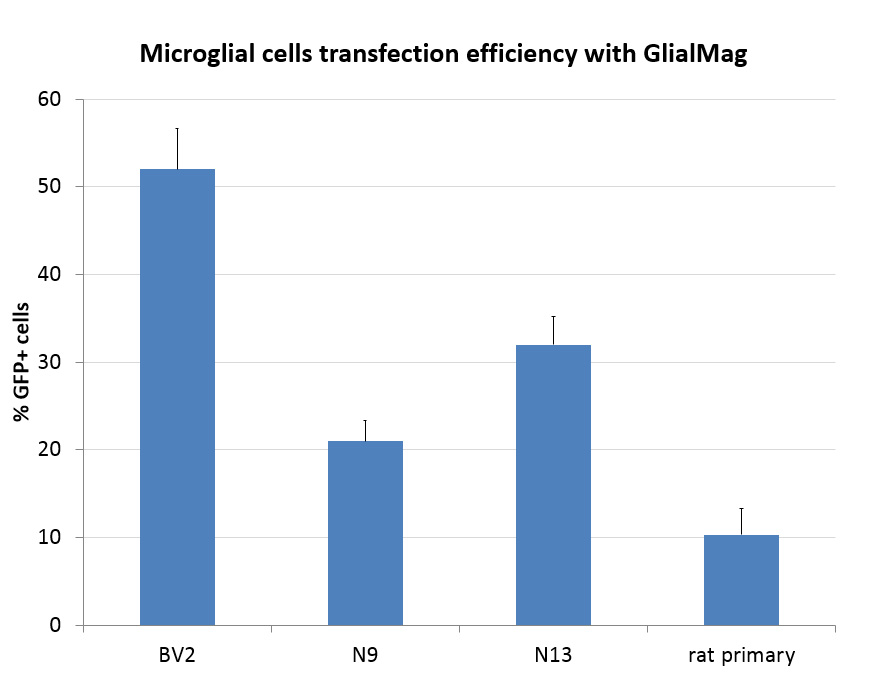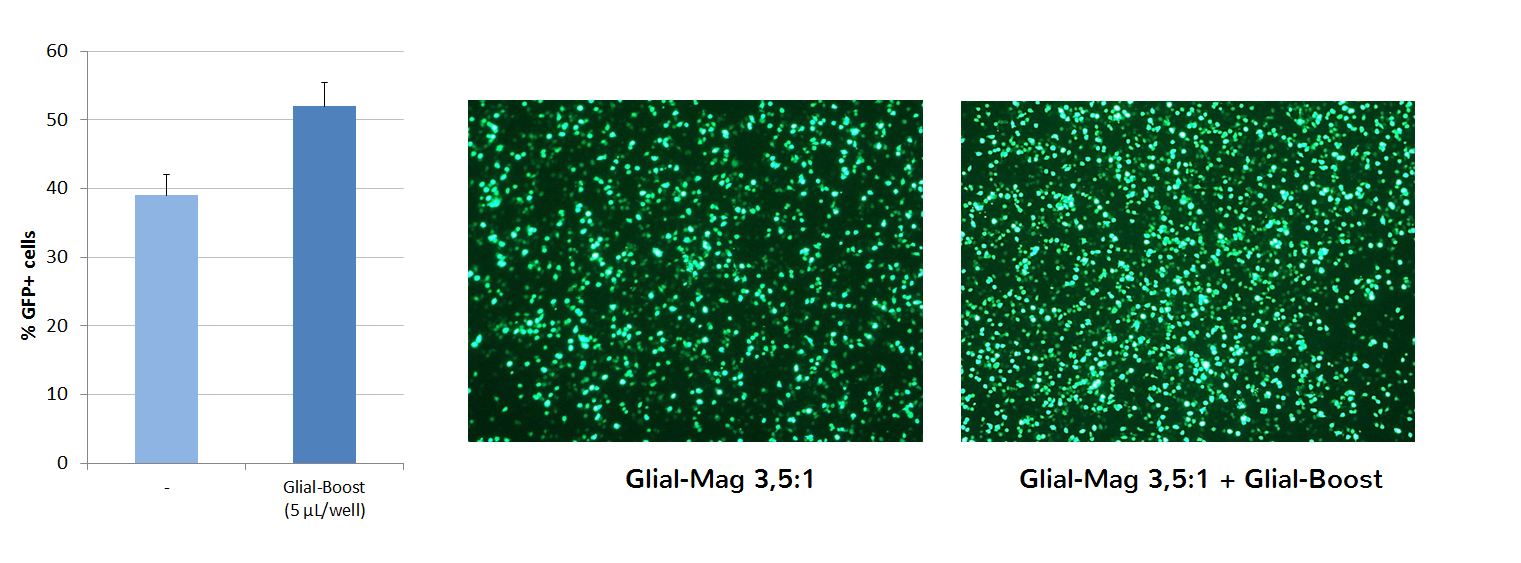
Glial-Mag is designed to reach optimal transfection efficiency with microglial cell lines and primary cells. Glial-Mag kit is the association of a specific magnetic nanoparticles formulation (Glial-Mag reagent), issued from our Magnetofection™ technology and a booster (Glial-Boost) designed to enhance transfection efficiency.
Magnetofection™ is a highly efficient gene delivery method that exploits magnetic force exerted upon gene vectors associated with magnetic particles to drive the nucleic acids towards and into the target cells. The nucleic acid dose gets concentrated onto the cells within a few minutes and 100% of cells get in contact with a significant vector dose.
Glial-Mag transfection reagent main benefits:
- Highly efficient with microglial cell lines & primary cells
- Low nucleic acid amount - minimized toxicity
- High level of nucleic acid compaction
- Easy and straightforward protocol
- Compatible with any culture medium.
Testimonial:
"We are using the BV2 microglia cell line in our lab and have some difficulties when it is about transfecting those cells to overexpressed some proteins. The main issue is the overactivation of the cells even only with the empty vector (pcDNA empty plasmid) observed by qPCR on some genes and also we often observed cell death after transfection.
So I have used Glial-Mag on my cells. The transfection worked well (validated by western blot) and I did not observe cell death.
I have also analyzed some gene expression levels and the cells do not seem activated too much by the transfection. Glial-Mag is a very good product."
Math. C. - Karolinska Institutet - Stockholm - Sweden
Sizes:
- GL00250: 250 µL of Glial-Mag reagent + 3mL Glial-Boost
- GL00500: 500 µL Glial-Mag reagent + 6mL Glial-Boost
- KGL00250: 250 µL Glial-Mag reagent + 3mL Glial-Boost + 1 Super magnetic plate
Storage: -20°C
Shipping Conditions: Room temperature
- This reagent needs to be used with a magnetic plate
Application
- For transfection of microglial cells line BV2, N9, N13, HMO6, MG-5, SIM-A9, primary microglia.
- Can be used for transient and stable transfection
- Ready-to-use and intended for research purpose only.
Results

Figure 1: 0.2µg of pVectOZ-GFP (BV2/Primary) and 0.4µg of pVectOZ-GFP (N9/N13) were complexed with Glial-Mag at a 3.5:1 ratio and transfection was performed according to the standard protocol. After 24h, GFP+ cells were analysed by Flow cytometry.

Figure 2: Transfection of BV2.
Complexes of pVectOZ-GFP encoding DNA and Glial-Mag were prepared as described in the standard protocol. Other commercial transfection reagents were used as recommended by the manufacturers. After 24h, GFP+ cells were analysed by fluorescence microscopy.

Figure 3: Transfection of BV2.
0.2 µg pVectOZ-GFP were complexed with Glial-Mag at a 3.5:1 ratio and transfection was performed in presence or not of Glial-Boost. After 24h, GFP+ cells were visualized under fluorescent microscopy and % of GFP+ cells was determined by Flow cytometry.






